-

Apr
24
Heritable Genetic Modification in Food Animals
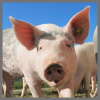
A consensus study that explored Heritable Genetic Modification in Food Animals was released by the National Academies of Science, Engineering, and Medicine (NASEM) on April 23, 2025, noting the study committee’s conclusion that overall, food derived from genome-edited animals is generally safe to eat. The committee also addressed the benefits of biotechnology to agricultural productivity and sustainability, while investigating potential risks.
Read more
-

Apr
24
Key Scientific Takeaways from the 2025 International Livestock Congress: The A,B,C’s of Communicating About the Value of Animal Agriculture to Society
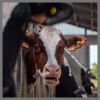
The 2025 International Livestock Congress (ILC) held March 4-5 in Houston, Texas, during the Houston Livestock Show & Rodeo, brought together global industry leaders, scholars, and policymakers to address critical issues shaping the future of animal agriculture. With the theme "Effectively Communicating Sound Science and the Value of Animal Agriculture to Society," this year’s Congress underscored the importance of data-driven decision-making, sustainability, and public engagement in shaping policies that impact the livestock and meat industries.
Read more
-

Apr
24
Washington Roundup – April 2025

The Trump Administration has directed agencies to evaluate additional reductions in the federal workforce as well as cuts to programs. Many agencies have offered a second round of deferred resignations and deferred retirements. While final numbers are not yet available, it appears that a larger number of federal workers are electing to leave service as a result of the second round...
Read more
-

Apr
22
The Giving Herd - ASAS Foundation Newsletter - April 2025
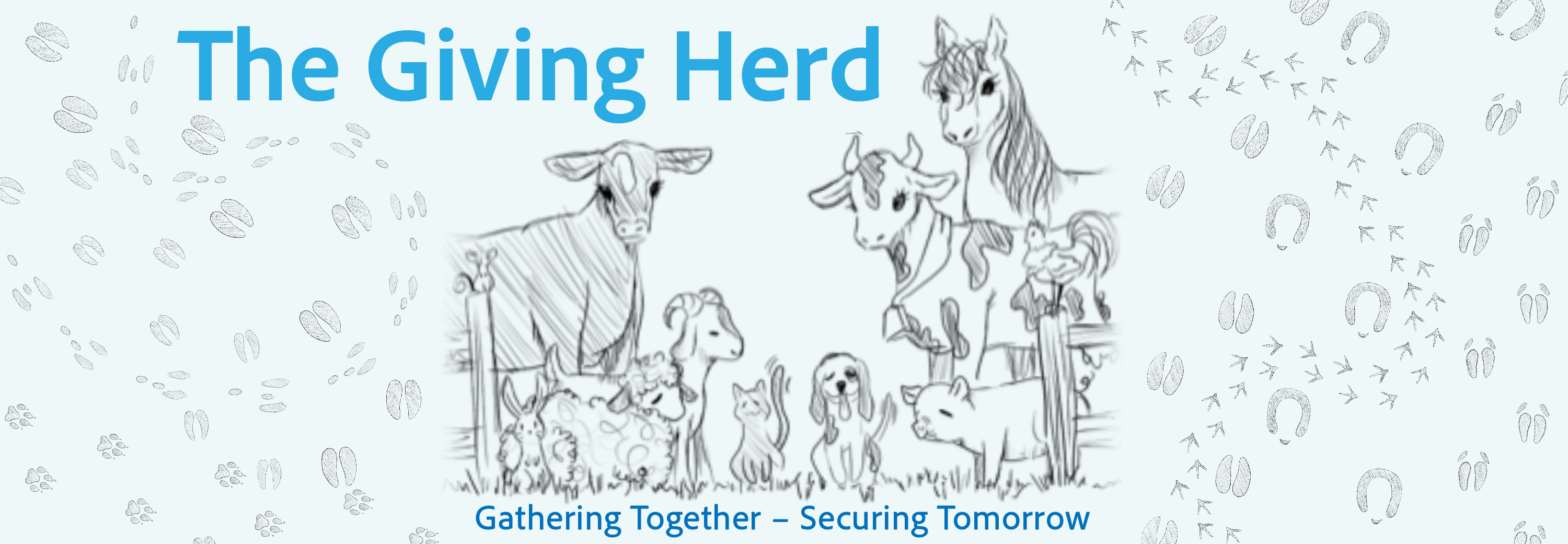
The April Edition of The Giving Herd, an ASAS Foundation Newsletter
Read more
-

Apr
22
Richard Coffey's Animal Science Journey

Richard Coffey's ASAS Journey
Read more
-

Apr
17
Interpretive Summary: A specific blend of prebiotics and postbiotics improved the gut microbiome of dogs with soft stools in the in vitro Simulator of the Canine Intestinal Microbial Ecosystem

Dogs with digestion problems can have an unbalanced digestive flora. This means the proportion of healthy and unhealthy bacteria that live in their gut is not well balanced. We used an experimental model to mimic the gut bacteria of dogs with soft stools. In the model, we looked at how a test product affected the gut bacteria.
Read more
-

Apr
17
Interpretive Summary: Acute enhanced liquid aspirin administration improves performance and intestinal function in nursery pigs

Traditional aspirin forms are known to cause stomach and intestinal damage. Enhanced liquid aspirin is a stable aspirin form which is thought to negate the negative effects of aspirin on the gastrointestinal tract. Feeding ELA improved body weight gain and several markers of intestinal function.
Read more
-

Apr
17
Interpretive Summary: Influence of heat stress and fescue toxicosis on the pulmonary arterial pressure of beef heifers

The ergot alkaloids produced by endophyte-infected (EI) varieties of tall fescue are beneficial to the plant but detrimental to cattle, as they induce different negative responses that are commonly referred to as fescue toxicosis (FT). The increased ambient temperature and humidity commonly experienced during the summer aggravate the symptoms of FT and this interaction significantly reduces animal performance and productivity.
Read more
-

Apr
17
Interpretive Summary: Out of Africa: genetic characterization and diversity of Mashona cattle in the United States

The Mashona cattle, a Bos taurus and Bos indicus composite, were brought from Zimbabwe to New Mexico in the 1990s. Since then, they have been valued by ranchers in hot and humid areas for their resistance to pests, heat, and maternal characteristics, making them ideal for crossbreeding. This study aimed to explore the genetic background and diversity of Mashona cattle in the United States by analyzing 24 samples from Tennessee State University.
Read more
-

Apr
17
Interpretive Summary: Breed-specific heterosis for growth and carcass traits in 18 U.S. cattle breeds
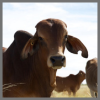
Heterosis, or hybrid vigor, is traditionally defined as the increase in the performance of crossbred progeny relative to the average performance of their purebred parents. These heterosis effects may vary depending on the breed of animals in the original cross; however, breed-specific estimates are difficult to obtain because of the resources required to estimate the effects. The Germplasm Evaluation Program at the U.S. Meat Animal Research Center is designed to evaluate crosses of 18 different prominent U.S. beef cattle breeds.
Read more
-

Apr
17
Interpretive Summary: The societal role of meat and livestock—what the science says

The Dublin Declaration of Scientists on the Societal Role of Livestock (2023) was initiated during the International Summit on the Societal Role of Meat, held in October 2022 in Dublin. Scientific evidence in support of the declaration was provided through a variety of oral presentations by leading experts and a series of articles published in a previous Themed Issue of Animal Frontiers (Volume 13, Issue 2, April 2023, ISSN 2160-6056, EISSN 2160-6064). Since the declaration was issued for the publishing of this editorial, over 1,200 verified scientists from around the world have signed to document their agreement.
Read more
-

Apr
03
Interpretive Summary: Enteric methane emission classification and ranking of growing steers during the backgrounding and finishing phases
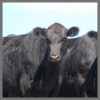
Ruminants present variability in enteric methane (CH4) emissions over time and due to changes in dietary characteristics; however, limited information exists regarding the re-ranking according to CH4 emissions of growing steers during the backgrounding and finishing phases, and the effect of using metabolic modulators such as growth-promoting implants, on gas flux. In this experiment, 46 Angus steers were evaluated during the backgrounding and finishing phases.
Read more
-

Apr
03
Interpretive Summary: Effects of dietary supplementation with linseed oil, Ascophyllum nodosum or treated A. nodosum on animal performance, gaseous emissions, ruminal fermentation and microbiota, and meat quality in growing dairy-beef bulls
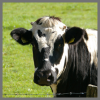
Globally there is a requirement to reduce greenhouse gas emissions while increasing food production to meet the nutritional demands of the growing population. In this study, linseed oil, a temperate brown seaweed, or an extract of the brown seaweed were mixed into concentrate feed and offered to growing beef bulls every morning and evening.
Read more
-

Apr
03
Interpretive Summary: Effects of increasing dietary zinc oxide levels on the hepatic mitochondrial energy metabolism, oxidative balance, and antioxidant system in weaned piglets

High dietary levels of zinc oxide (ZnO) have been used in swine production to prevent/control postweaning diarrhea. However, such strategy has been demonstrated to stimulate bacterial resistance to antibiotics and metals.
Read more
-

Apr
03
Interpretive Summary: Effect of Luteolin on cadmium-inhibited bone growth via suppressing osteoclastogenesis in laying chickens

Luteolin (Lut) is a natural flavonoid extract from various plants and exhibits multiple biological activities, including anti-inflammatory, antitumor, antibacterial, and antiviral effects. Importantly, Lut can form metal complexes with trace metal elements, enhancing its resorption and utilization in animals.
Read more
-

Apr
03
Interpretive Summary: Partially replacing dietary starch with soybean oil improved production performance of weaned Rex rabbits
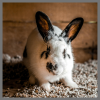
High-starch diets in rabbit farming may pose health risks. Therefore, we focused on fats, another key energy source for monogastric animals, and investigated the effects of replacing part of the dietary starch with fats of equivalent digestible energy.
Read more
-

Apr
03
Interpretive Summary: Prediction of Pellet Durability Index in a commercial feed mill using multiple linear regression with variable selection and dimensionality reduction
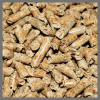
Pellet quality is an important determinant of downstream animal performance, as well as efficiency of production both at the mill and farm. Pellet Durability Index (PDI) is a metric used in commercial feed milling to signal the pellet quality of pelleted feeds, and what degradation of pellets might occur during subsequent handling and transportation.
Read more
-

Apr
03
Washington Roundup – March 2025

With a March 14th deadline looming, Congress was able to pass a continuing resolution to fund the government through the remainder of fiscal year 2025. The resolution included mainly “level” funding for programs at their fiscal year 2024 amounts. That was true for USDA’s agricultural research accounts within NIFA, ARS, ERS and NASS. The one exception was the removal of funding in the ARS Buildings and Facilities line for fiscal year 2025.
Read more
-

Mar
20
Interpretive Summary: Development of a prototype genetic evaluation for teat and udder score in American Angus cattle
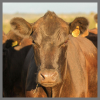
Estimated breeding values provide an estimate of the genetic merit of an individual for specific traits helping to identify animals with superior genetic potential for growth rate, milk production, meat quality, disease resistance, and more. Over recent years, American Angus Association members have visually scored cows for teat size (TS) and udder suspension score (US), amassing approximately 42,000 records on approximately 24,000 cows.
Read more
-

Mar
20
Interpretive Summary: Genetic parameter estimates of liver abscesses in feedlot beef cattle
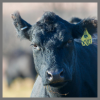
Condemned livers result in over $15M in lost income to the U.S. beef industry annually and the main cause of condemned livers is from abscesses. Liver scoring is a four-level measurement of abscess severity: 0 (no abscesses), A− (mild abscesses), A (moderate abscesses), and A+ (severe abscesses).
Read more
 AprHeritable Genetic Modification in Food Animals
AprHeritable Genetic Modification in Food Animals A consensus study that explored Heritable Genetic Modification in Food Animals was released by the National Academies of Science, Engineering, and Medicine (NASEM) on April 23, 2025, noting the study committee’s conclusion that overall, food derived from genome-edited animals is generally safe to eat. The committee also addressed the benefits of biotechnology to agricultural productivity and sustainability, while investigating potential risks.
A consensus study that explored Heritable Genetic Modification in Food Animals was released by the National Academies of Science, Engineering, and Medicine (NASEM) on April 23, 2025, noting the study committee’s conclusion that overall, food derived from genome-edited animals is generally safe to eat. The committee also addressed the benefits of biotechnology to agricultural productivity and sustainability, while investigating potential risks. AprKey Scientific Takeaways from the 2025 International Livestock Congress: The A,B,C’s of Communicating About the Value of Animal Agriculture to Society
AprKey Scientific Takeaways from the 2025 International Livestock Congress: The A,B,C’s of Communicating About the Value of Animal Agriculture to Society The 2025 International Livestock Congress (ILC) held March 4-5 in Houston, Texas, during the Houston Livestock Show & Rodeo, brought together global industry leaders, scholars, and policymakers to address critical issues shaping the future of animal agriculture. With the theme "Effectively Communicating Sound Science and the Value of Animal Agriculture to Society," this year’s Congress underscored the importance of data-driven decision-making, sustainability, and public engagement in shaping policies that impact the livestock and meat industries.
The 2025 International Livestock Congress (ILC) held March 4-5 in Houston, Texas, during the Houston Livestock Show & Rodeo, brought together global industry leaders, scholars, and policymakers to address critical issues shaping the future of animal agriculture. With the theme "Effectively Communicating Sound Science and the Value of Animal Agriculture to Society," this year’s Congress underscored the importance of data-driven decision-making, sustainability, and public engagement in shaping policies that impact the livestock and meat industries. AprWashington Roundup – April 2025
AprWashington Roundup – April 2025 The Trump Administration has directed agencies to evaluate additional reductions in the federal workforce as well as cuts to programs. Many agencies have offered a second round of deferred resignations and deferred retirements. While final numbers are not yet available, it appears that a larger number of federal workers are electing to leave service as a result of the second round...
The Trump Administration has directed agencies to evaluate additional reductions in the federal workforce as well as cuts to programs. Many agencies have offered a second round of deferred resignations and deferred retirements. While final numbers are not yet available, it appears that a larger number of federal workers are electing to leave service as a result of the second round... AprThe Giving Herd - ASAS Foundation Newsletter - April 2025
AprThe Giving Herd - ASAS Foundation Newsletter - April 2025 The April Edition of The Giving Herd, an ASAS Foundation Newsletter
The April Edition of The Giving Herd, an ASAS Foundation Newsletter AprRichard Coffey's Animal Science Journey
AprRichard Coffey's Animal Science Journey Richard Coffey's ASAS Journey
Richard Coffey's ASAS Journey AprInterpretive Summary: A specific blend of prebiotics and postbiotics improved the gut microbiome of dogs with soft stools in the in vitro Simulator of the Canine Intestinal Microbial Ecosystem
AprInterpretive Summary: A specific blend of prebiotics and postbiotics improved the gut microbiome of dogs with soft stools in the in vitro Simulator of the Canine Intestinal Microbial Ecosystem Dogs with digestion problems can have an unbalanced digestive flora. This means the proportion of healthy and unhealthy bacteria that live in their gut is not well balanced. We used an experimental model to mimic the gut bacteria of dogs with soft stools. In the model, we looked at how a test product affected the gut bacteria.
Dogs with digestion problems can have an unbalanced digestive flora. This means the proportion of healthy and unhealthy bacteria that live in their gut is not well balanced. We used an experimental model to mimic the gut bacteria of dogs with soft stools. In the model, we looked at how a test product affected the gut bacteria. AprInterpretive Summary: Acute enhanced liquid aspirin administration improves performance and intestinal function in nursery pigs
AprInterpretive Summary: Acute enhanced liquid aspirin administration improves performance and intestinal function in nursery pigs Traditional aspirin forms are known to cause stomach and intestinal damage. Enhanced liquid aspirin is a stable aspirin form which is thought to negate the negative effects of aspirin on the gastrointestinal tract. Feeding ELA improved body weight gain and several markers of intestinal function.
Traditional aspirin forms are known to cause stomach and intestinal damage. Enhanced liquid aspirin is a stable aspirin form which is thought to negate the negative effects of aspirin on the gastrointestinal tract. Feeding ELA improved body weight gain and several markers of intestinal function. AprInterpretive Summary: Influence of heat stress and fescue toxicosis on the pulmonary arterial pressure of beef heifers
AprInterpretive Summary: Influence of heat stress and fescue toxicosis on the pulmonary arterial pressure of beef heifers The ergot alkaloids produced by endophyte-infected (EI) varieties of tall fescue are beneficial to the plant but detrimental to cattle, as they induce different negative responses that are commonly referred to as fescue toxicosis (FT). The increased ambient temperature and humidity commonly experienced during the summer aggravate the symptoms of FT and this interaction significantly reduces animal performance and productivity.
The ergot alkaloids produced by endophyte-infected (EI) varieties of tall fescue are beneficial to the plant but detrimental to cattle, as they induce different negative responses that are commonly referred to as fescue toxicosis (FT). The increased ambient temperature and humidity commonly experienced during the summer aggravate the symptoms of FT and this interaction significantly reduces animal performance and productivity. AprInterpretive Summary: Out of Africa: genetic characterization and diversity of Mashona cattle in the United States
AprInterpretive Summary: Out of Africa: genetic characterization and diversity of Mashona cattle in the United States The Mashona cattle, a Bos taurus and Bos indicus composite, were brought from Zimbabwe to New Mexico in the 1990s. Since then, they have been valued by ranchers in hot and humid areas for their resistance to pests, heat, and maternal characteristics, making them ideal for crossbreeding. This study aimed to explore the genetic background and diversity of Mashona cattle in the United States by analyzing 24 samples from Tennessee State University.
The Mashona cattle, a Bos taurus and Bos indicus composite, were brought from Zimbabwe to New Mexico in the 1990s. Since then, they have been valued by ranchers in hot and humid areas for their resistance to pests, heat, and maternal characteristics, making them ideal for crossbreeding. This study aimed to explore the genetic background and diversity of Mashona cattle in the United States by analyzing 24 samples from Tennessee State University. AprInterpretive Summary: Breed-specific heterosis for growth and carcass traits in 18 U.S. cattle breeds
AprInterpretive Summary: Breed-specific heterosis for growth and carcass traits in 18 U.S. cattle breeds Heterosis, or hybrid vigor, is traditionally defined as the increase in the performance of crossbred progeny relative to the average performance of their purebred parents. These heterosis effects may vary depending on the breed of animals in the original cross; however, breed-specific estimates are difficult to obtain because of the resources required to estimate the effects. The Germplasm Evaluation Program at the U.S. Meat Animal Research Center is designed to evaluate crosses of 18 different prominent U.S. beef cattle breeds.
Heterosis, or hybrid vigor, is traditionally defined as the increase in the performance of crossbred progeny relative to the average performance of their purebred parents. These heterosis effects may vary depending on the breed of animals in the original cross; however, breed-specific estimates are difficult to obtain because of the resources required to estimate the effects. The Germplasm Evaluation Program at the U.S. Meat Animal Research Center is designed to evaluate crosses of 18 different prominent U.S. beef cattle breeds. AprInterpretive Summary: The societal role of meat and livestock—what the science says
AprInterpretive Summary: The societal role of meat and livestock—what the science says The Dublin Declaration of Scientists on the Societal Role of Livestock (2023) was initiated during the International Summit on the Societal Role of Meat, held in October 2022 in Dublin. Scientific evidence in support of the declaration was provided through a variety of oral presentations by leading experts and a series of articles published in a previous Themed Issue of Animal Frontiers (Volume 13, Issue 2, April 2023, ISSN 2160-6056, EISSN 2160-6064). Since the declaration was issued for the publishing of this editorial, over 1,200 verified scientists from around the world have signed to document their agreement.
The Dublin Declaration of Scientists on the Societal Role of Livestock (2023) was initiated during the International Summit on the Societal Role of Meat, held in October 2022 in Dublin. Scientific evidence in support of the declaration was provided through a variety of oral presentations by leading experts and a series of articles published in a previous Themed Issue of Animal Frontiers (Volume 13, Issue 2, April 2023, ISSN 2160-6056, EISSN 2160-6064). Since the declaration was issued for the publishing of this editorial, over 1,200 verified scientists from around the world have signed to document their agreement. AprInterpretive Summary: Enteric methane emission classification and ranking of growing steers during the backgrounding and finishing phases
AprInterpretive Summary: Enteric methane emission classification and ranking of growing steers during the backgrounding and finishing phases Ruminants present variability in enteric methane (CH4) emissions over time and due to changes in dietary characteristics; however, limited information exists regarding the re-ranking according to CH4 emissions of growing steers during the backgrounding and finishing phases, and the effect of using metabolic modulators such as growth-promoting implants, on gas flux. In this experiment, 46 Angus steers were evaluated during the backgrounding and finishing phases.
Ruminants present variability in enteric methane (CH4) emissions over time and due to changes in dietary characteristics; however, limited information exists regarding the re-ranking according to CH4 emissions of growing steers during the backgrounding and finishing phases, and the effect of using metabolic modulators such as growth-promoting implants, on gas flux. In this experiment, 46 Angus steers were evaluated during the backgrounding and finishing phases. AprInterpretive Summary: Effects of dietary supplementation with linseed oil, Ascophyllum nodosum or treated A. nodosum on animal performance, gaseous emissions, ruminal fermentation and microbiota, and meat quality in growing dairy-beef bulls
AprInterpretive Summary: Effects of dietary supplementation with linseed oil, Ascophyllum nodosum or treated A. nodosum on animal performance, gaseous emissions, ruminal fermentation and microbiota, and meat quality in growing dairy-beef bulls Globally there is a requirement to reduce greenhouse gas emissions while increasing food production to meet the nutritional demands of the growing population. In this study, linseed oil, a temperate brown seaweed, or an extract of the brown seaweed were mixed into concentrate feed and offered to growing beef bulls every morning and evening.
Globally there is a requirement to reduce greenhouse gas emissions while increasing food production to meet the nutritional demands of the growing population. In this study, linseed oil, a temperate brown seaweed, or an extract of the brown seaweed were mixed into concentrate feed and offered to growing beef bulls every morning and evening. AprInterpretive Summary: Effects of increasing dietary zinc oxide levels on the hepatic mitochondrial energy metabolism, oxidative balance, and antioxidant system in weaned piglets
AprInterpretive Summary: Effects of increasing dietary zinc oxide levels on the hepatic mitochondrial energy metabolism, oxidative balance, and antioxidant system in weaned piglets High dietary levels of zinc oxide (ZnO) have been used in swine production to prevent/control postweaning diarrhea. However, such strategy has been demonstrated to stimulate bacterial resistance to antibiotics and metals.
High dietary levels of zinc oxide (ZnO) have been used in swine production to prevent/control postweaning diarrhea. However, such strategy has been demonstrated to stimulate bacterial resistance to antibiotics and metals. AprInterpretive Summary: Effect of Luteolin on cadmium-inhibited bone growth via suppressing osteoclastogenesis in laying chickens
AprInterpretive Summary: Effect of Luteolin on cadmium-inhibited bone growth via suppressing osteoclastogenesis in laying chickens Luteolin (Lut) is a natural flavonoid extract from various plants and exhibits multiple biological activities, including anti-inflammatory, antitumor, antibacterial, and antiviral effects. Importantly, Lut can form metal complexes with trace metal elements, enhancing its resorption and utilization in animals.
Luteolin (Lut) is a natural flavonoid extract from various plants and exhibits multiple biological activities, including anti-inflammatory, antitumor, antibacterial, and antiviral effects. Importantly, Lut can form metal complexes with trace metal elements, enhancing its resorption and utilization in animals. AprInterpretive Summary: Partially replacing dietary starch with soybean oil improved production performance of weaned Rex rabbits
AprInterpretive Summary: Partially replacing dietary starch with soybean oil improved production performance of weaned Rex rabbits High-starch diets in rabbit farming may pose health risks. Therefore, we focused on fats, another key energy source for monogastric animals, and investigated the effects of replacing part of the dietary starch with fats of equivalent digestible energy.
High-starch diets in rabbit farming may pose health risks. Therefore, we focused on fats, another key energy source for monogastric animals, and investigated the effects of replacing part of the dietary starch with fats of equivalent digestible energy. AprInterpretive Summary: Prediction of Pellet Durability Index in a commercial feed mill using multiple linear regression with variable selection and dimensionality reduction
AprInterpretive Summary: Prediction of Pellet Durability Index in a commercial feed mill using multiple linear regression with variable selection and dimensionality reduction Pellet quality is an important determinant of downstream animal performance, as well as efficiency of production both at the mill and farm. Pellet Durability Index (PDI) is a metric used in commercial feed milling to signal the pellet quality of pelleted feeds, and what degradation of pellets might occur during subsequent handling and transportation.
Pellet quality is an important determinant of downstream animal performance, as well as efficiency of production both at the mill and farm. Pellet Durability Index (PDI) is a metric used in commercial feed milling to signal the pellet quality of pelleted feeds, and what degradation of pellets might occur during subsequent handling and transportation. AprWashington Roundup – March 2025
AprWashington Roundup – March 2025 With a March 14th deadline looming, Congress was able to pass a continuing resolution to fund the government through the remainder of fiscal year 2025. The resolution included mainly “level” funding for programs at their fiscal year 2024 amounts. That was true for USDA’s agricultural research accounts within NIFA, ARS, ERS and NASS. The one exception was the removal of funding in the ARS Buildings and Facilities line for fiscal year 2025.
With a March 14th deadline looming, Congress was able to pass a continuing resolution to fund the government through the remainder of fiscal year 2025. The resolution included mainly “level” funding for programs at their fiscal year 2024 amounts. That was true for USDA’s agricultural research accounts within NIFA, ARS, ERS and NASS. The one exception was the removal of funding in the ARS Buildings and Facilities line for fiscal year 2025. MarInterpretive Summary: Development of a prototype genetic evaluation for teat and udder score in American Angus cattle
MarInterpretive Summary: Development of a prototype genetic evaluation for teat and udder score in American Angus cattle Estimated breeding values provide an estimate of the genetic merit of an individual for specific traits helping to identify animals with superior genetic potential for growth rate, milk production, meat quality, disease resistance, and more. Over recent years, American Angus Association members have visually scored cows for teat size (TS) and udder suspension score (US), amassing approximately 42,000 records on approximately 24,000 cows.
Estimated breeding values provide an estimate of the genetic merit of an individual for specific traits helping to identify animals with superior genetic potential for growth rate, milk production, meat quality, disease resistance, and more. Over recent years, American Angus Association members have visually scored cows for teat size (TS) and udder suspension score (US), amassing approximately 42,000 records on approximately 24,000 cows. MarInterpretive Summary: Genetic parameter estimates of liver abscesses in feedlot beef cattle
MarInterpretive Summary: Genetic parameter estimates of liver abscesses in feedlot beef cattle Condemned livers result in over $15M in lost income to the U.S. beef industry annually and the main cause of condemned livers is from abscesses. Liver scoring is a four-level measurement of abscess severity: 0 (no abscesses), A− (mild abscesses), A (moderate abscesses), and A+ (severe abscesses).
Condemned livers result in over $15M in lost income to the U.S. beef industry annually and the main cause of condemned livers is from abscesses. Liver scoring is a four-level measurement of abscess severity: 0 (no abscesses), A− (mild abscesses), A (moderate abscesses), and A+ (severe abscesses).



